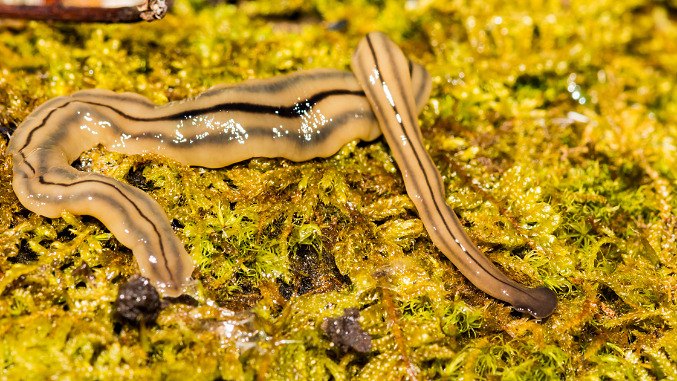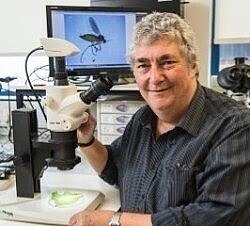
January Bug of The Month: Flatworms
2 Minute Read
This month, Dr. Ian Bedford tells us everything we need to know about the 'bug of the month' for January, flatworms.What are flatworms?
Flatworms are usually discovered within a dark, damp environment, such as leaf litter or under plant pots, and are quite a unique group of invertebrates that belong to the taxonomic phylum called platyhelminths.
Platyhelminths are the creatures that we call flatworms, and they can be recognised by their flat ribbon-like, slimy bodies which have no appendages or tentacles. In addition, platyhelminths have no body cavities and will acquire oxygen and nutrients by absorption through their skin.
Assumed to be the oldest living ancestors of all bilateral animals, fossil evidence suggests that platyhelminths have remained unchanged in appearance for over 500 million years and encompass species that live within aquatic environments as well as those that are endoparasites such as tapeworms.
Assumed to be the oldest living ancestors of all bilateral animals, fossil evidence suggests that platyhelminths have remained unchanged in appearance for over 500 million years and encompass species that live within aquatic environments as well as those that are endoparasites such as tapeworms.

Are flatworms a native species to Britain?
Britain’s first invasive soil dwelling platyhelminth though, was recorded in the 1960’s, and was identified as the New Zealand flatworm, a dark brown coloured creature that, when fully grown could reach 8 inches in length. As increasingly more New Zealand flatworms were discovered in home gardens, concerns grew for the detrimental effects in might be having on Britain’s ecology since it was a rapidly reproducing species that was a significant predator of earthworms.
Smaller than the New Zealand flatworm though, the Australian flatworm was orange in colour and seems to have spread and become established throughout the southern counties of Britain. Despite the discovery of other invasive platyhelminths over recent years, the New Zealand and Australian species are assumed to be the only flatworms to have become properly established in Britain and are continuing to be found within home gardens where they can remain active throughout the year.

What to do if you discover flatworms in the garden
Controlling infestations of a soil-dwelling Platyhelminth though is not easy since there are no chemical products available. Flatworms are also capable of reproducing by a process called fission which entails detached sections of their body growing into new individuals.
If platyhelminths are found within a garden though, it’s advisable to take a photo or collect a specimen, and then report it to the British Non-Native Secretariat.
The Definitive Guide to Garden Pests

About Dr Ian Bedford
Ian has been fascinated by the bug world for as long as he can remember. From studying butterflies on the South Downs as a youngster, he went on to pursue a career in Research Entomology and ran the Entomology Dept at the John Innes Centre in Norwich up until his recent retirement. Ian now works as an independent entomologist offering advice to companies developing environmentally safer plant protection products.
FIND OUT MORE
FIND OUT MORE
Comments (0)
Why not be the first to send us your thoughts?
Leave A Comment
Most popular articles
1
Plastic plant pots dimensions and uses2
Peat vs Peat Free - Choosing the right Potting Compost3
How to Grow Watercress at home in plant pots4
January Jobs5
Our guide to seed sowing compost